In my last post I introduced the printmaker Samuel Alken (1756-1815), and showed how his work, like that of many illustrators and printmakers, can be hidden in a library’s collection. One of the factors affecting whether a printmaker (or any other contributor) appears in a library catalogue is the prominence with which they are named in a work, so I thought it would be interesting to look at some of the different ways in which Alken was acknowledged in the books to which he contributed.
The plates that Alken made for William Gilpin are unusual in that they are unsigned. We have seen that this was not due to any reticence on Gilpin’s part, as Alken was fully acknowledged in the text. In fact, the praise given to Alken in the first book he worked on for Gilpin (the ‘Highland tour’) is even more effusive. In the ‘Account of the prints’ found at the back of the volume, Gilpin writes: “Of the free, and elegant manner, in which they are executed by Mr. Alkin in aquatinta, who completed the whole work himself, I can speak with great assurance. He has given me much satisfaction; and I hope he will give equal satisfaction to the public. The elegance of his workmanship makes up for the defects of the drawings”. The drawings, of course, were by Gilpin himself. Perhaps the absence of the artists’ names, or any other text, on the plates is a deliberate attempt to make them look more like original drawings.
Like most printmakers in this period, the majority of Alken’s work involved reproducing the designs of other artists. It was usual for the names of both original artist and printmaker to appear beneath the plate, as in this example, from William Sotheby’s ‘A tour through parts of Wales’:
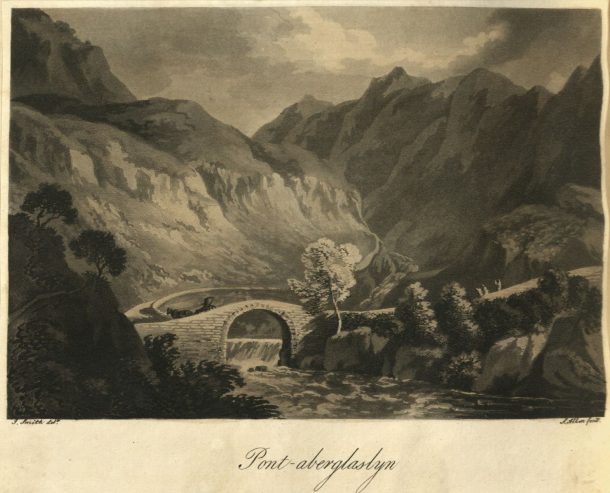
Here, Alken is working from drawings by John “Warwick” Smith. Alken is not otherwise mentioned in the book, while Smith’s name appears prominently on the title page, for reasons that are made clear inside: “the author of the following poems thinks proper to signify, that the present edition is published solely for the emolument of the artist, who has stamped a value on the descriptive parts of the Welsh tour, by the embellishments of his accurate and masterly pencil”.
Compare this to the second book I showed in my previous post (William Maton’s ‘Observations relative chiefly to the natural history, picturesque scenery, and antiquities, of the western counties of England, made in the years 1794 and 1796’). Here the illustrations are after drawings by Maton’s travelling companion, the clergyman and antiquary Thomas Racket. The volume is dedicated to Racket (“It would be great ingratitude not to inscribe to you a work that owes its embellishments to your accurate pencil”), but it is Alken whose name appears on the title page. This presumably reflects Alken’s growing reputation as a professional printmaker, compared to Racket’s amateur status. Alken’s name is seen increasingly on title pages from this date on.
An interesting use of Alken’s name in the marketing of books is seen in Richard Warner’s ‘A tour through Cornwall’. The only plate is this wonderfully romantic aquatint by Alken after J. West showing “A kistvaen in Breock, Cornwall” (this is presumably Pawton Quoit near Padstow, allowing for artistic license). J. West is possibly John West, a watercolour artist active in Bath and the West Country in this period.
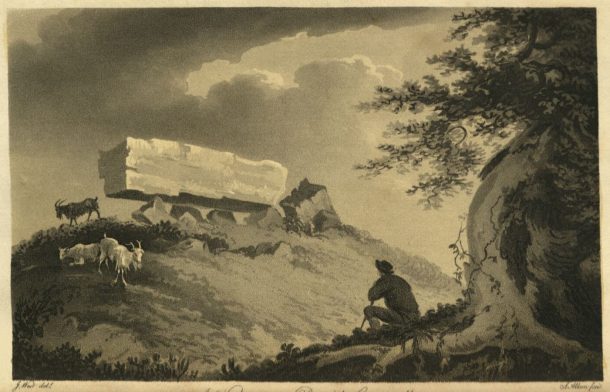
Although neither artist nor printmaker are otherwise mentioned in the book, Alken’s name must have been sufficiently recognisable (even if only to people who had already bought this volume) that the same author’s ‘Walks through Wales’ could be advertised in the back of this volume as having “three fine plates by Alken”.
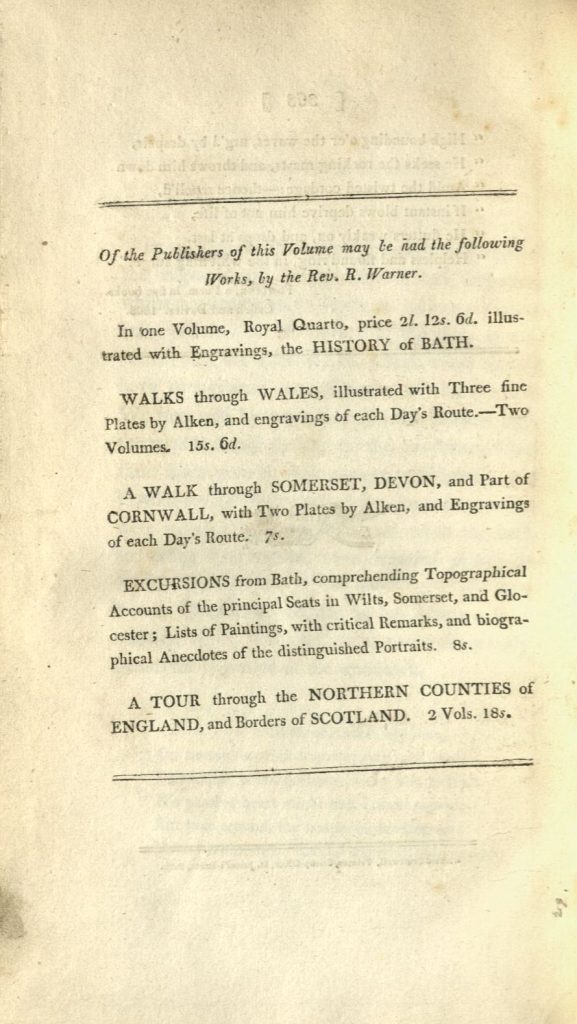
This actually refers to two separate volumes: ‘A walk through Wales, in August 1797’, first published in 1798 and ‘A second walk through Wales … in August and September 1798’, first published in 1799. These are two of the plates, both appearing in the ‘Second walk’
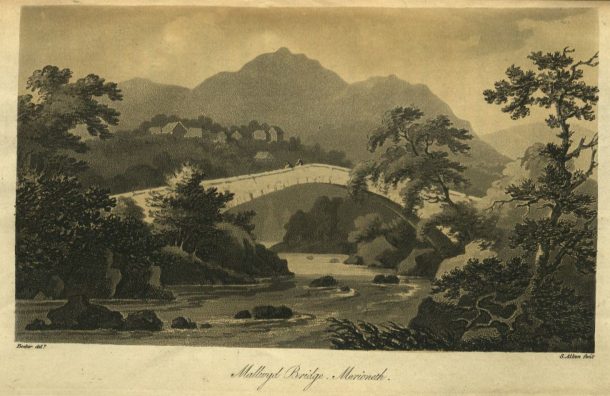
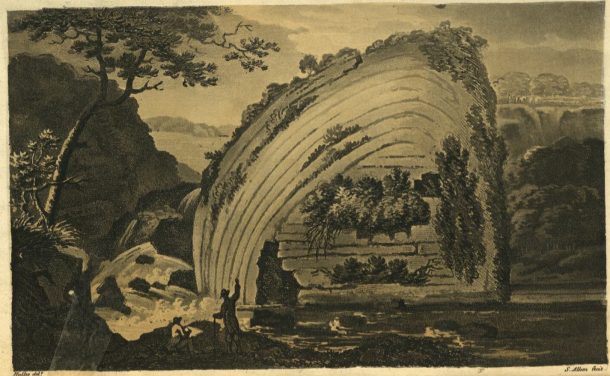
As with the previous example, one cannot identify the original artists with complete certainty, as they are identified only by surname. It seems likely that they are Ferdinand Becker and Thomas Hulley, both of whom were local West Country artists. The third plate mentioned is in the first ‘Walk’. The NAL holds a copy of the second edition of this work (also published in 1798), but it is lacking the plate. Examination of other copies shows it to be an aquatint of Tintern Abbey after Thomas Girtin (who is now far more famous than Alken).
Whatever the reasons publishers may have had for the naming or not of printmakers and illustrators, they can all be identified in the library catalogue (as resources allow). To find other works with plates by Alken, you can search the NAL catalogue online.
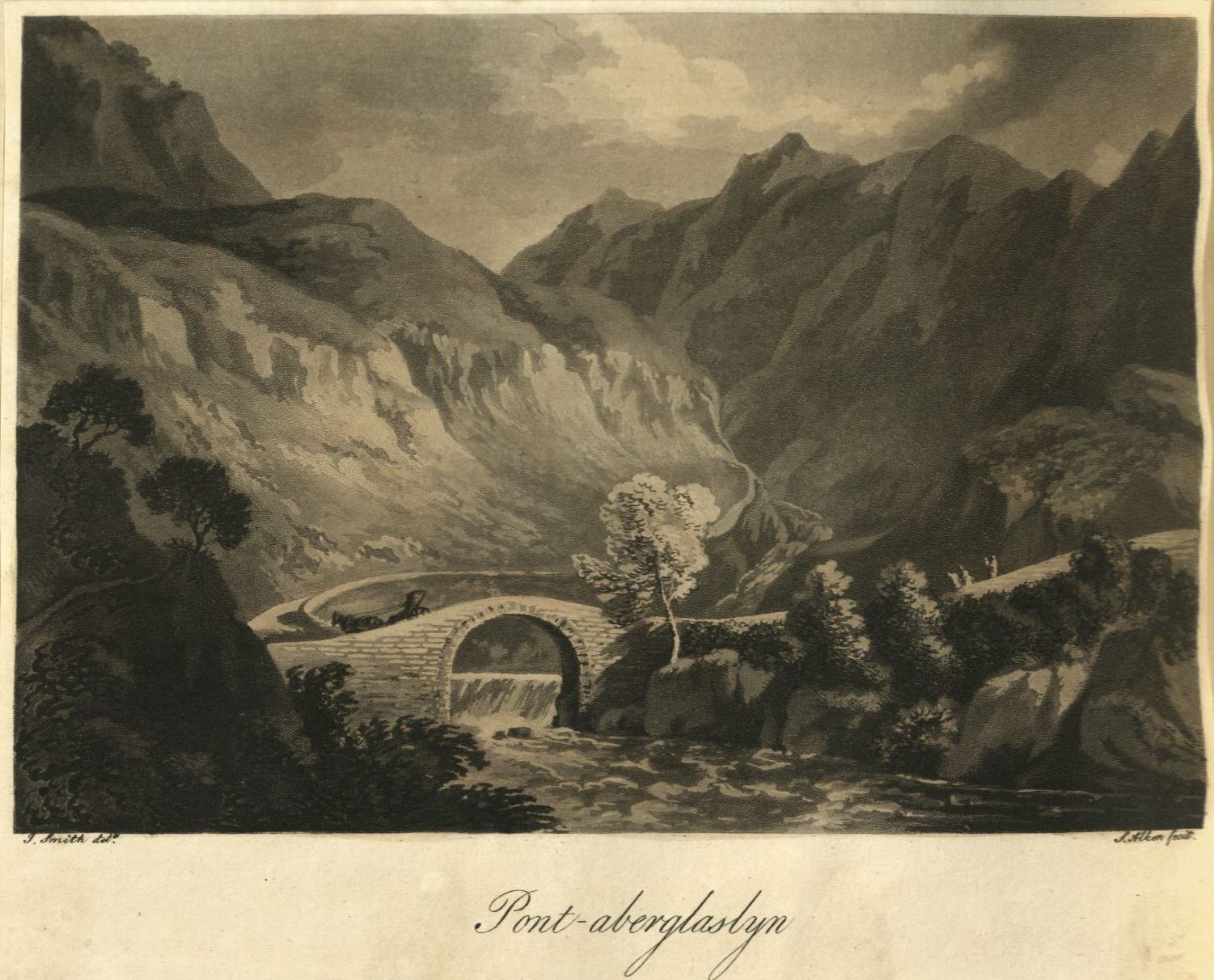
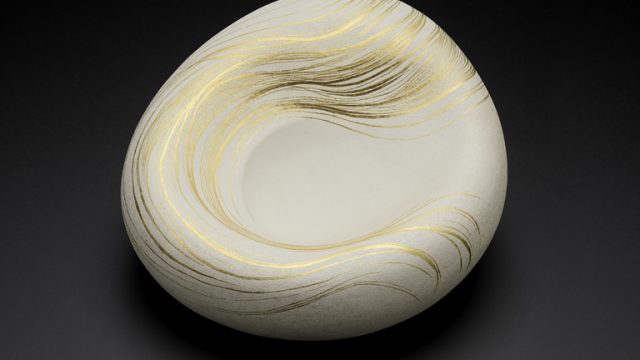
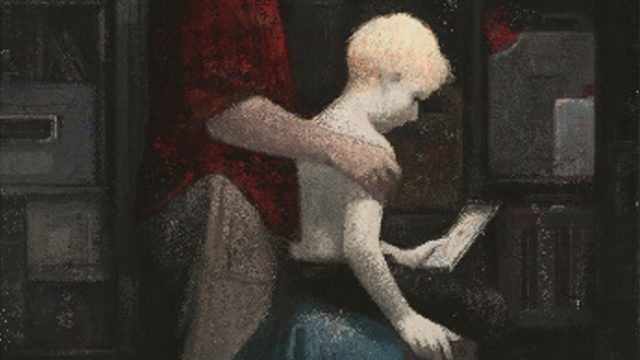
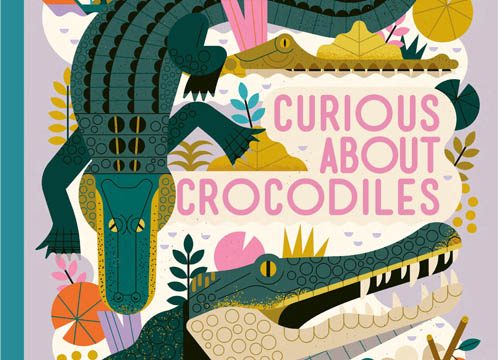
I was forwarded this post by a friend who works for the national Trust, and found it most interesting.
As it happens I recently bought vol I of Rev Bingleys’s Tour Round North Wales in 1798 which as you will know, has two plates signed by Alken after drawings by Bingley. If possible I would like to receive future posts of print interest.